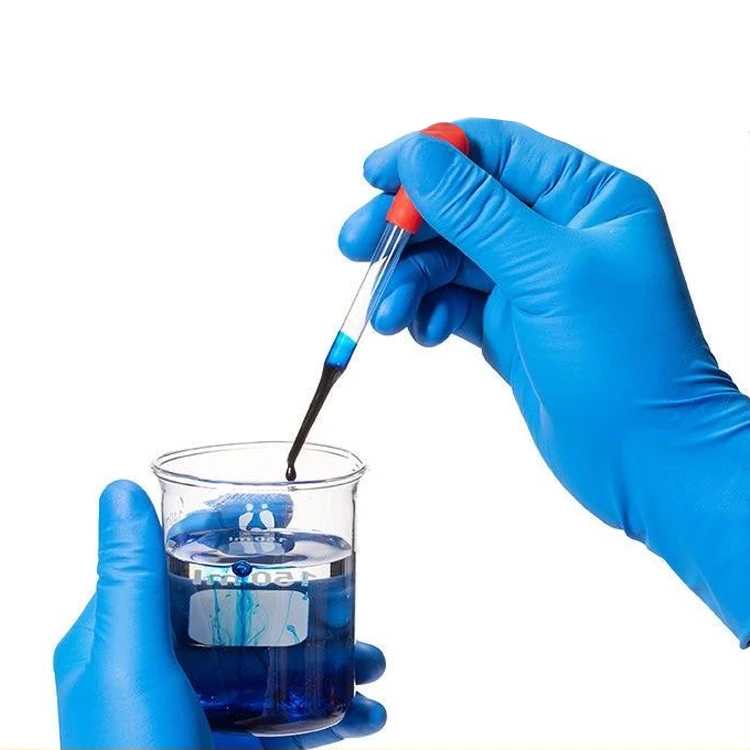Style
Laboratory Safety Equipment: A Comprehensive Guide for a Secure Workplace
Laboratory Safety Equipment: A Comprehensive Guide for a Secure Workplace
Safety is paramount in any laboratory environment. With the presence of hazardous chemicals, volatile substances, and delicate experiments, it is crucial to have appropriate safety measures in place. At Mandy Scientific, we are committed to providing laboratories with top-quality safety equipment to protect both personnel and research outcomes.
In this post, we’ll discuss essential safety equipment every laboratory needs, their functions, and best practices to maintain a secure and compliant laboratory environment.
Why Safety Equipment Matters
The primary goal of safety equipment is to protect laboratory personnel from potential hazards, including:
- Chemical spills and splashes
- Exposure to harmful gases and fumes
- Fire and explosions
- Electrical hazards
- Biological contamination
Laboratory safety equipment not only ensures the well-being of staff but also protects research materials and expensive instruments from damage.
Essential Laboratory Safety Equipment
1. Personal Protective Equipment (PPE)
PPE is the first line of defense against exposure to laboratory hazards. Every lab worker should wear appropriate protective gear based on the nature of the experiments.
Common types of PPE include:
- Lab Coats: Protect clothing and skin from chemical splashes
- Gloves: Provide protection against chemical, biological, and thermal hazards
- Safety Goggles and Face Shields: Protect eyes and face from splashes, dust, and impact
- Respirators and Masks: Filter harmful airborne particles and fumes
- Footwear: Closed-toe, chemical-resistant shoes
Best Practices:
- Ensure PPE fits properly and is comfortable to wear
- Replace damaged or worn-out equipment immediately
- Store PPE in designated areas
2. Fume Hoods
Fume hoods are essential for protecting lab personnel from hazardous fumes, vapors, and airborne particles.
Types of fume hoods:
- Ducted Fume Hoods: Vent harmful fumes outside the building
- Ductless Fume Hoods: Filter and recirculate air back into the lab
Best Practices:
- Keep the sash at the recommended height for optimal protection
- Regularly inspect and maintain fume hood filters and ventilation systems
- Avoid clutter inside the hood to ensure proper airflow
3. Emergency Shower and Eyewash Stations
Quick access to emergency showers and eyewash stations can prevent severe injuries in the event of chemical exposure.
Applications:
- Emergency showers: Rinse chemicals off the body
- Eyewash stations: Flush chemicals from the eyes
Best Practices:
- Install stations in easily accessible locations
- Conduct weekly inspections to ensure proper water flow
- Train lab personnel on how to use these stations effectively
4. Fire Safety Equipment
Fires can occur in laboratories due to flammable substances and electrical malfunctions. Having the right fire safety equipment is essential.
Key fire safety equipment includes:
- Fire Extinguishers: Class ABC extinguishers are suitable for most lab fires
- Fire Blankets: Smother small fires or wrap around a person to protect from flames
- Smoke Detectors: Provide early warning for fire outbreaks
- Fire Alarms: Alert personnel to evacuate
Best Practices:
- Conduct regular fire drills
- Ensure fire extinguishers are inspected and serviced annually
- Train lab personnel on how to use fire safety equipment properly
5. Spill Containment Kits
Chemical spills are a common hazard in laboratories. Spill containment kits help manage and clean up spills efficiently.
Contents of a typical spill kit:
- Absorbent pads and booms
- Neutralizing agents for acids and bases
- PPE such as gloves and goggles
- Disposal bags
Best Practices:
- Ensure spill kits are easily accessible
- Train personnel on proper spill response procedures
- Regularly check and replenish spill kit supplies
6. Biological Safety Cabinets (BSCs)
Biological safety cabinets protect lab personnel, the environment, and samples from biological contamination.
Types of BSCs:
- Class I: Protect personnel and the environment but not samples
- Class II: Protect personnel, samples, and the environment
- Class III: Provide the highest level of protection and are completely sealed
Best Practices:
- Avoid blocking airflow vents
- Regularly clean and decontaminate the cabinet
- Perform annual maintenance checks
7. First Aid Kits
First aid kits are essential for providing immediate treatment for minor injuries in the lab.
Typical contents:
- Bandages and gauze
- Antiseptic wipes
- Burn ointment
- Scissors and tweezers
- Pain relievers
Best Practices:
- Keep first aid kits in a visible and accessible location
- Regularly check and restock supplies
- Train lab personnel on basic first aid procedures
Maintenance and Inspection of Safety Equipment
Having safety equipment is not enough; regular maintenance and inspections are essential to ensure they function properly during emergencies.
Key maintenance tips:
- Schedule routine inspections and servicing
- Keep records of maintenance activities
- Replace expired or damaged equipment immediately
Training and Drills:
- Conduct regular safety training sessions
- Organize emergency response drills to prepare personnel for various scenarios
Creating a Culture of Safety in Laboratories
Safety goes beyond equipment — it requires a culture of awareness and responsibility.
Tips for fostering a safety culture:
- Lead by example: Supervisors should prioritize and enforce safety protocols
- Encourage open communication about safety concerns
- Reward adherence to safety practices
Mandy Scientific: Your Trusted Partner for Laboratory Safety Equipment
At Mandy Scientific, we are dedicated to helping laboratories maintain a safe and compliant environment. We offer a wide range of high-quality safety equipment, including PPE, fume hoods, spill kits, and more.
Why Choose Us?
- Premium, certified safety products
- Expert advice on selecting the right equipment
- Reliable after-sales support
Conclusion
A safe laboratory is a productive laboratory. By investing in the right safety equipment and fostering a culture of safety, you can protect personnel, preserve valuable research, and maintain compliance with industry regulations.
Ready to upgrade your lab’s safety equipment? Contact Mandy Scientific today for expert advice and top-quality products tailored to your needs.

